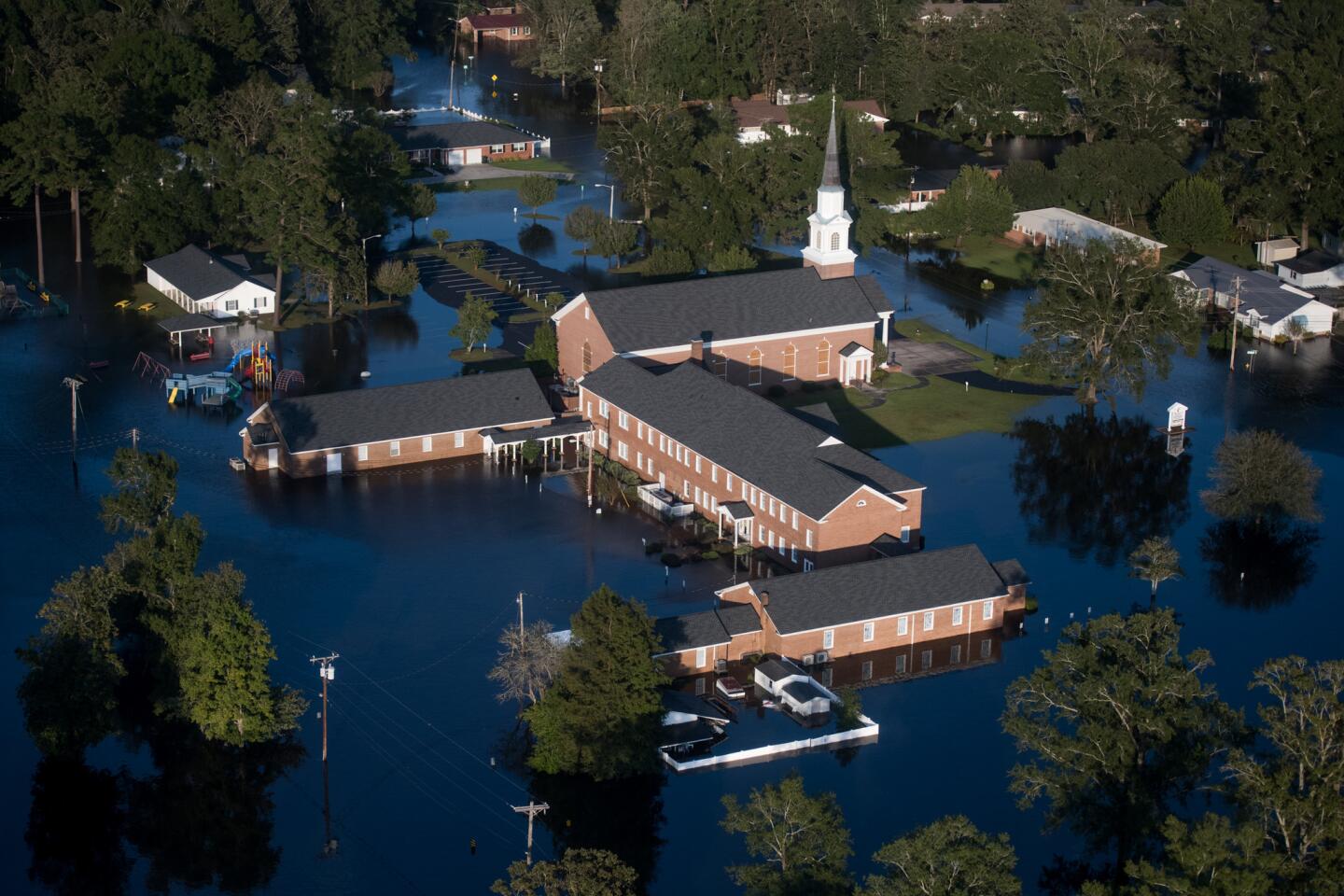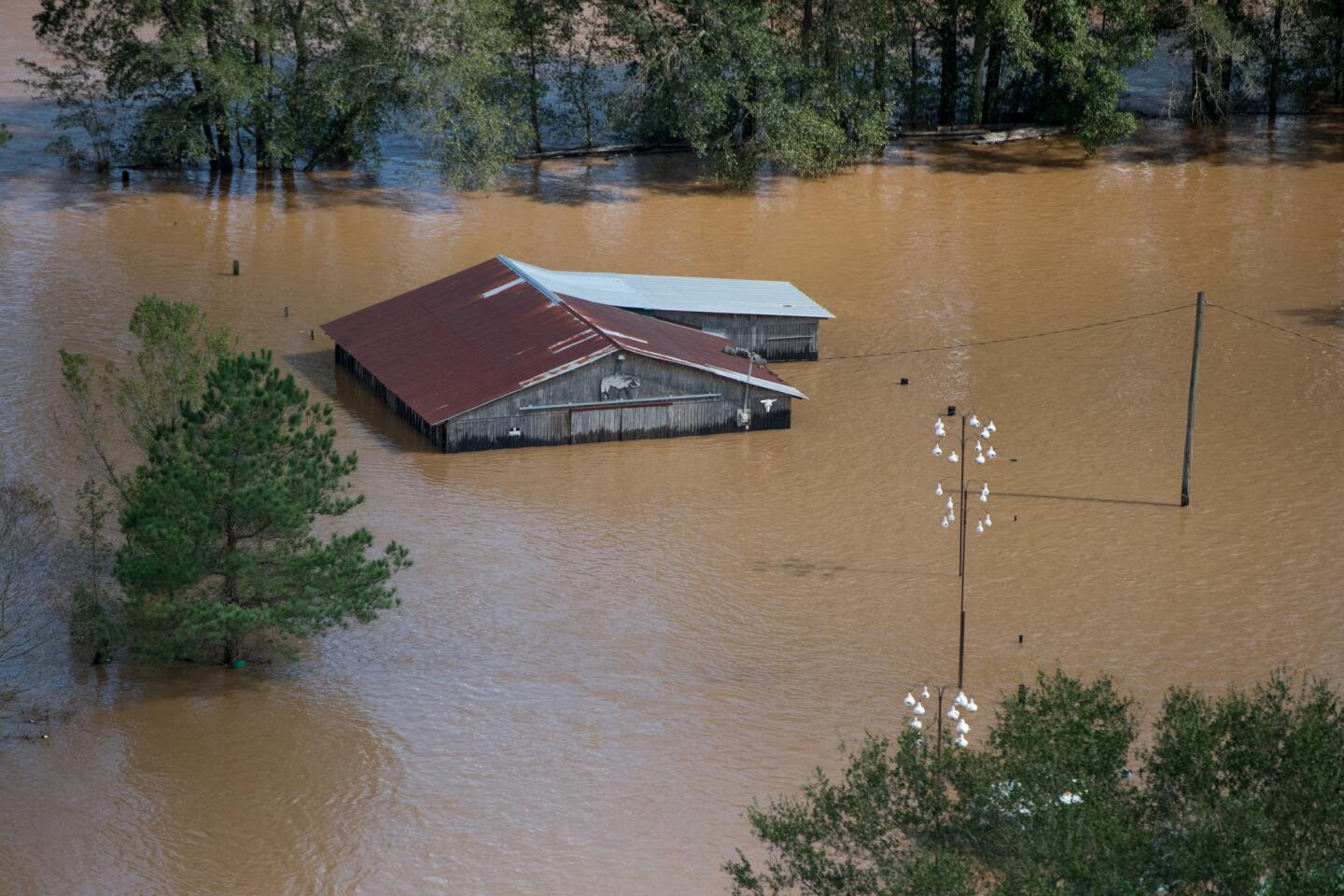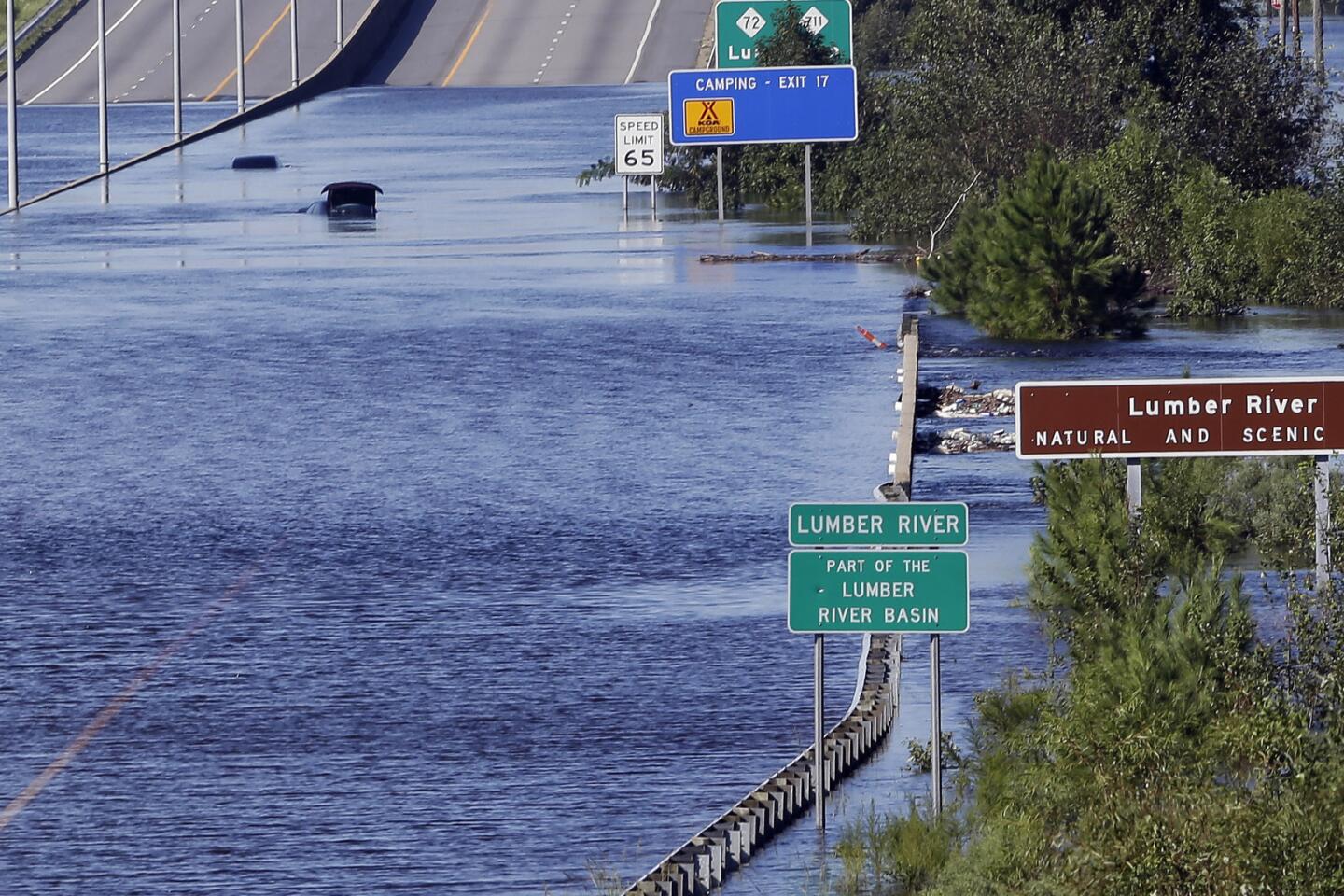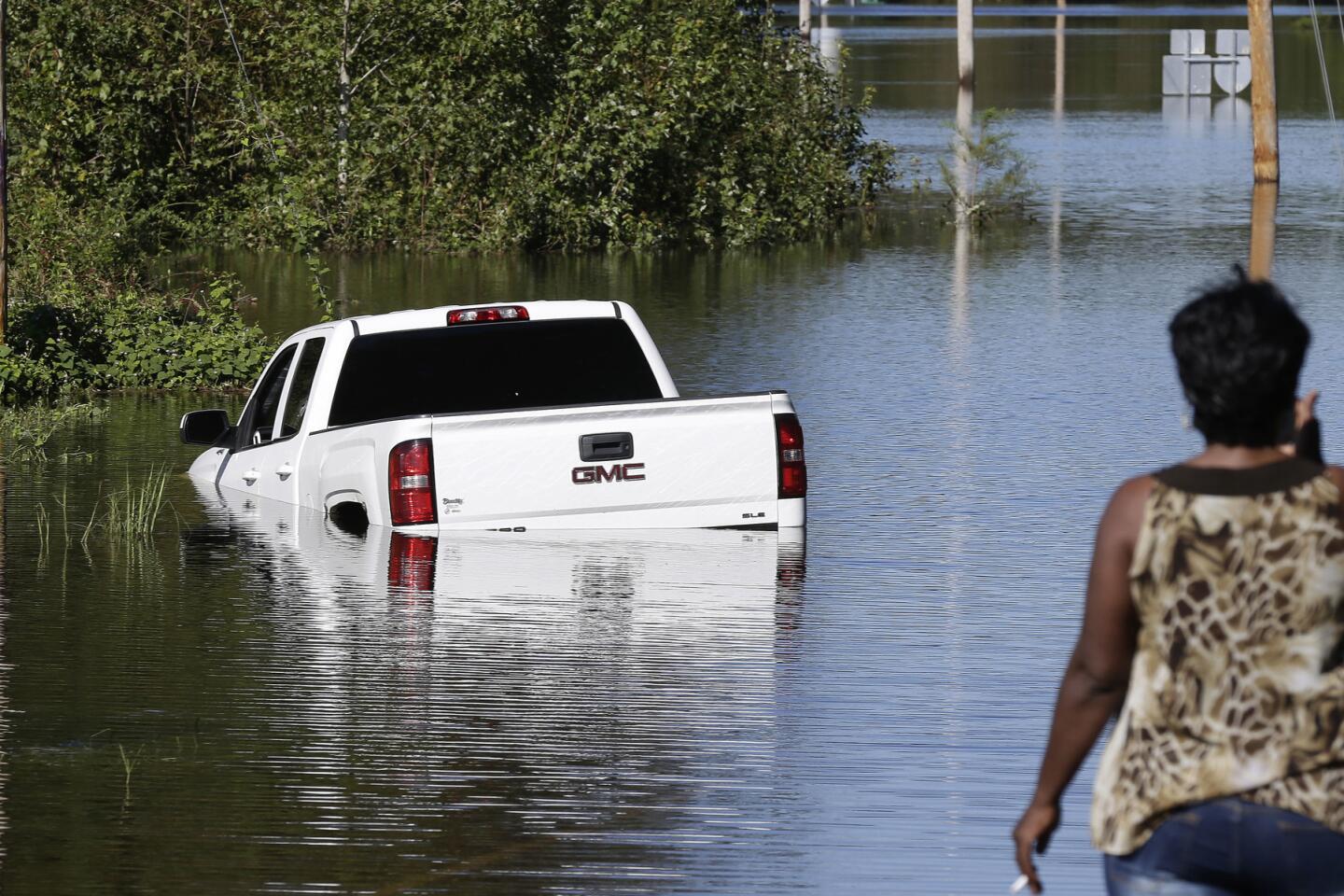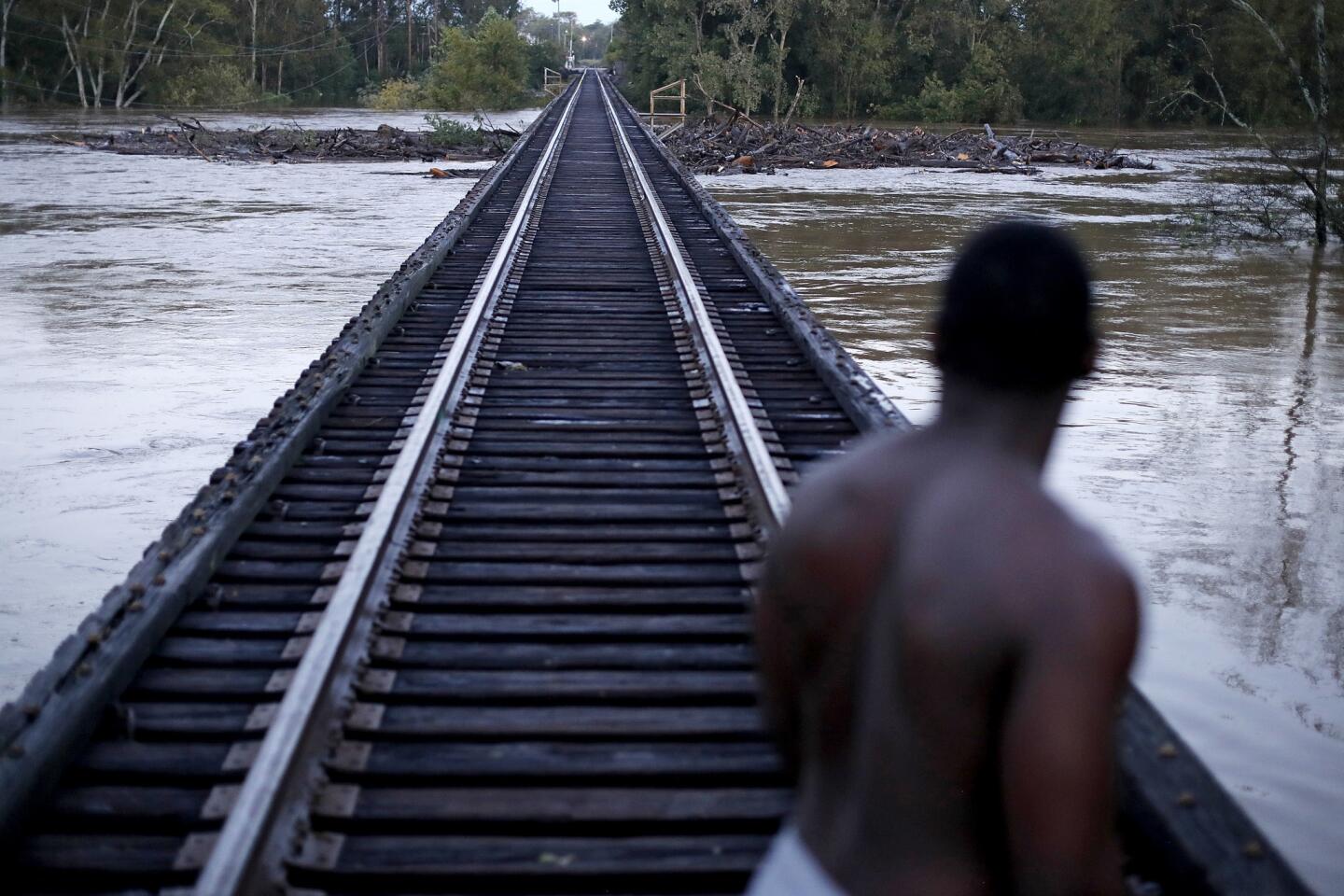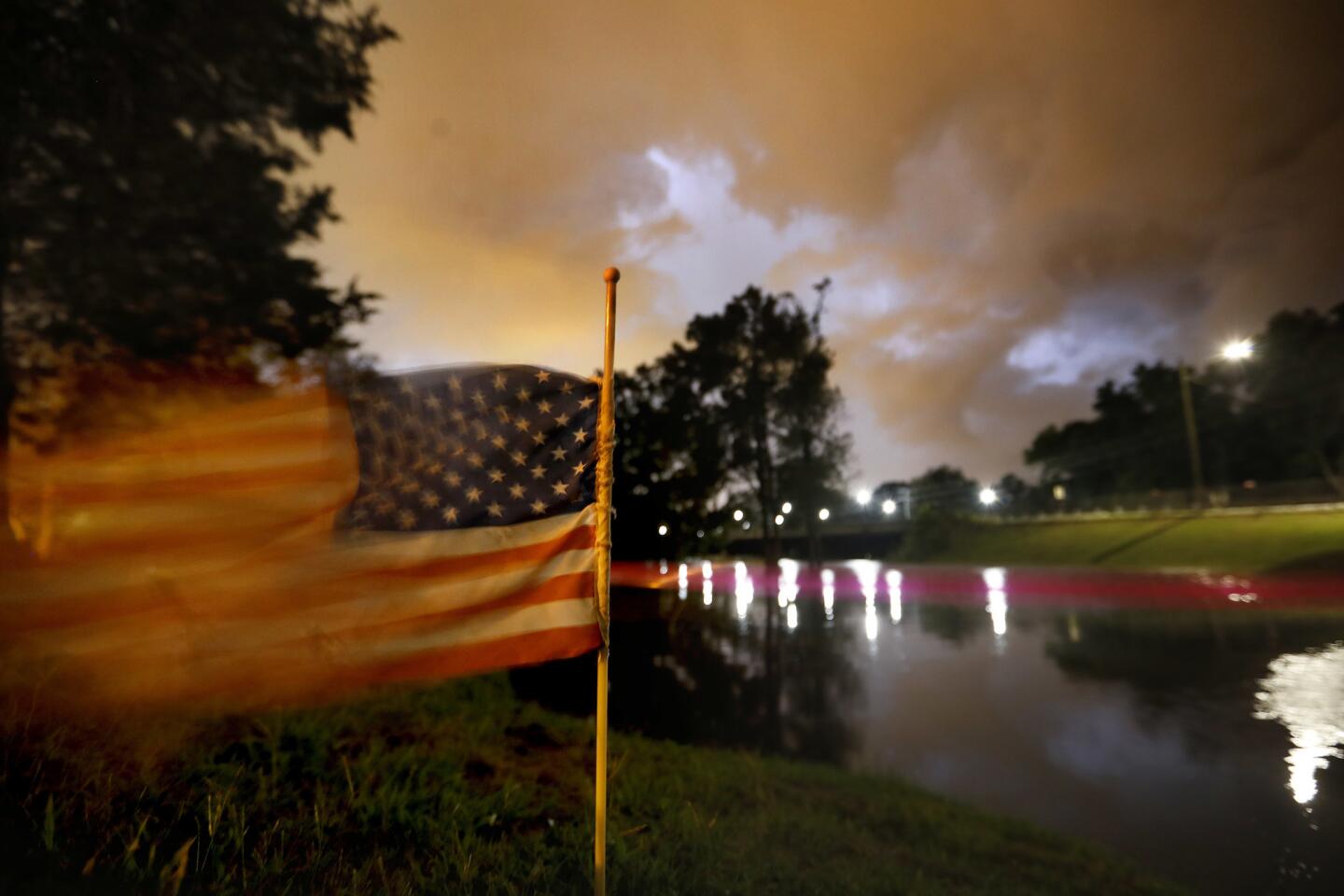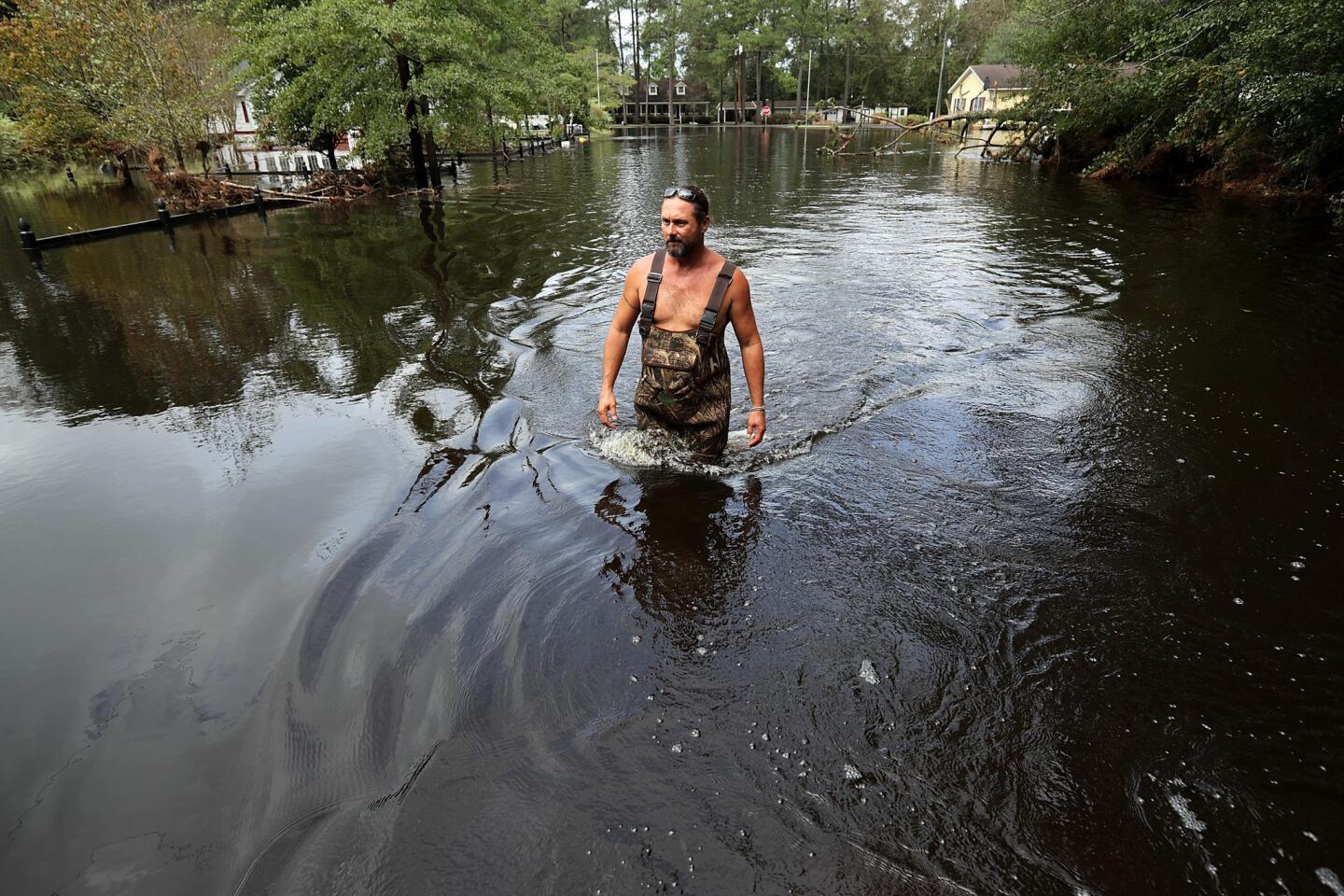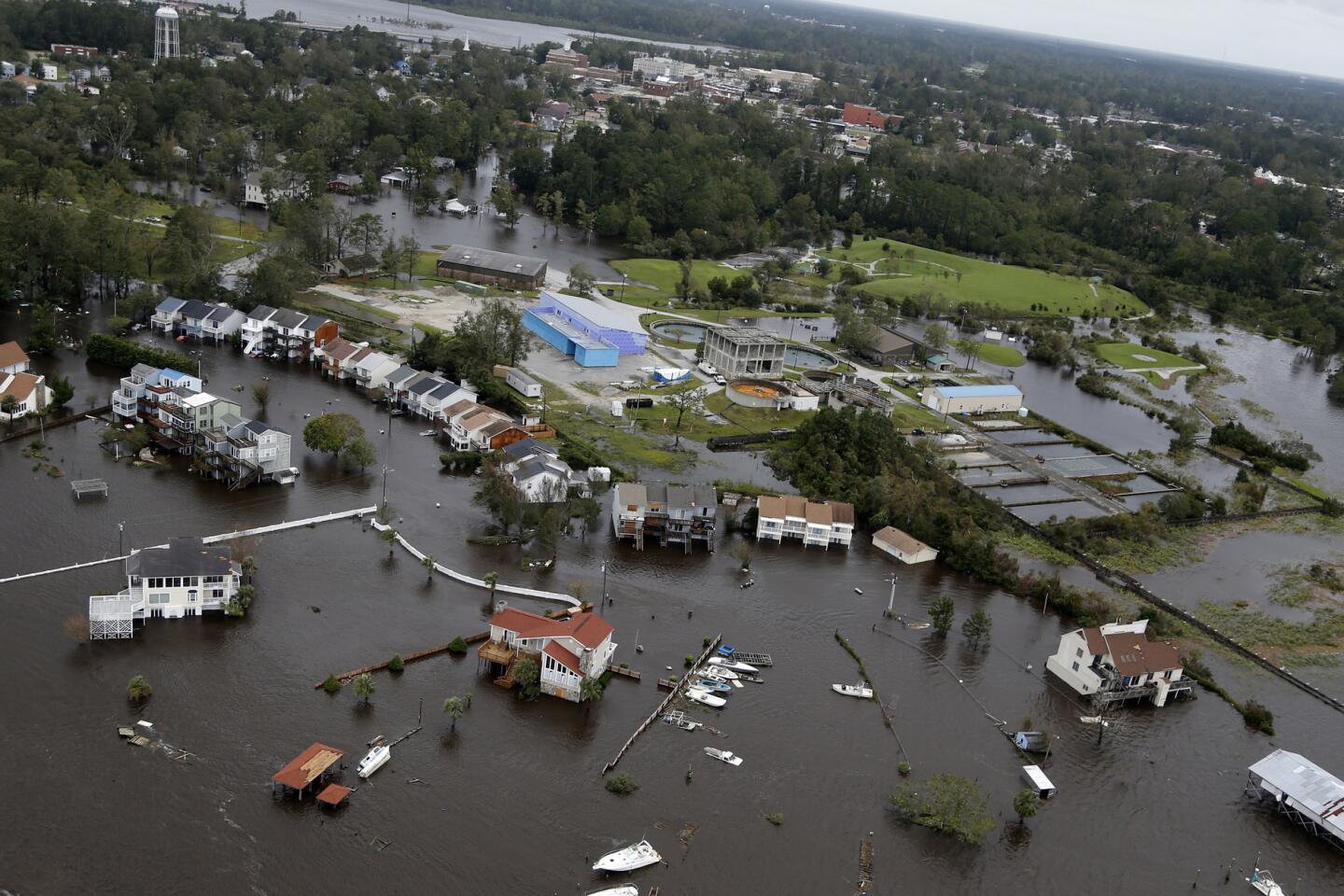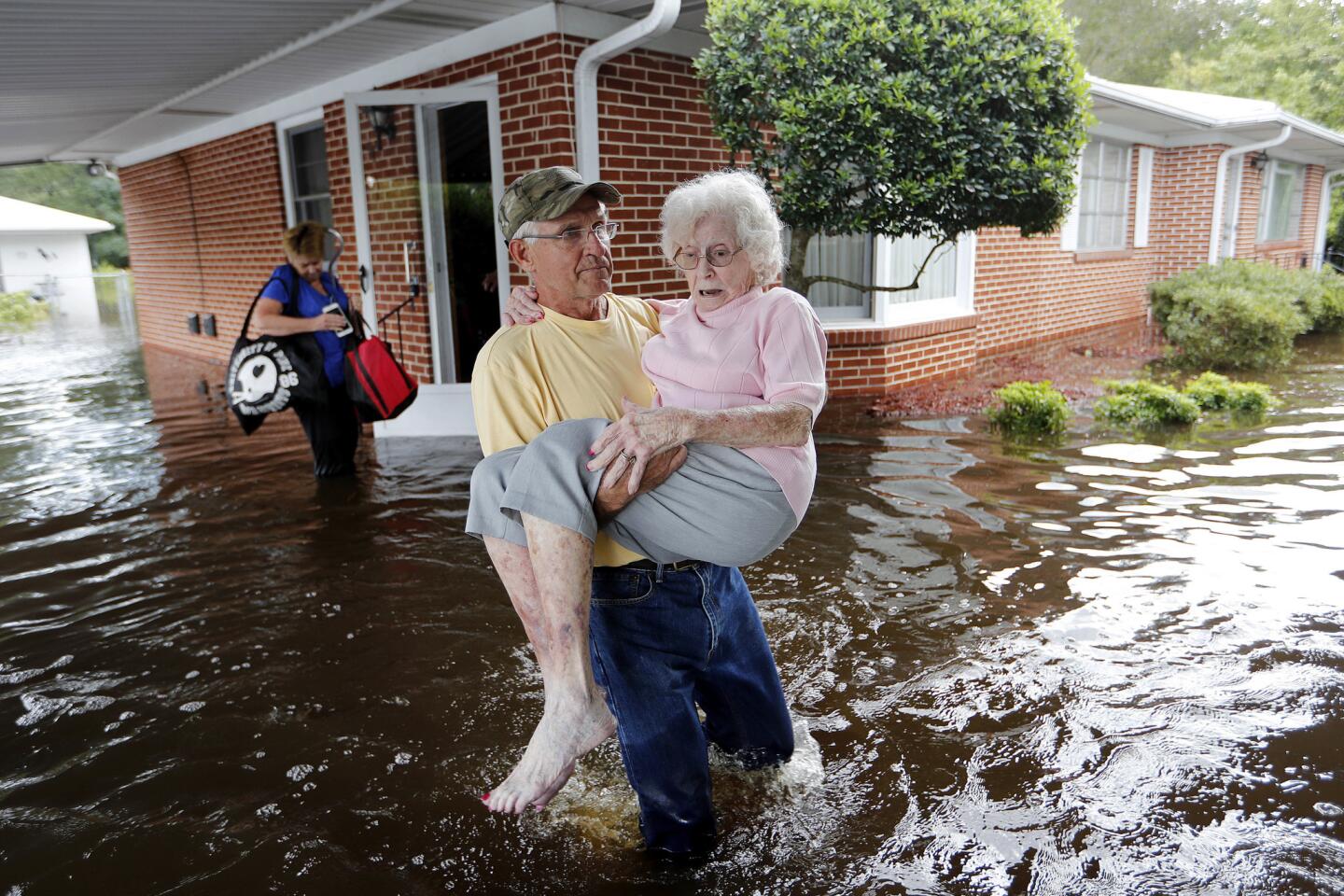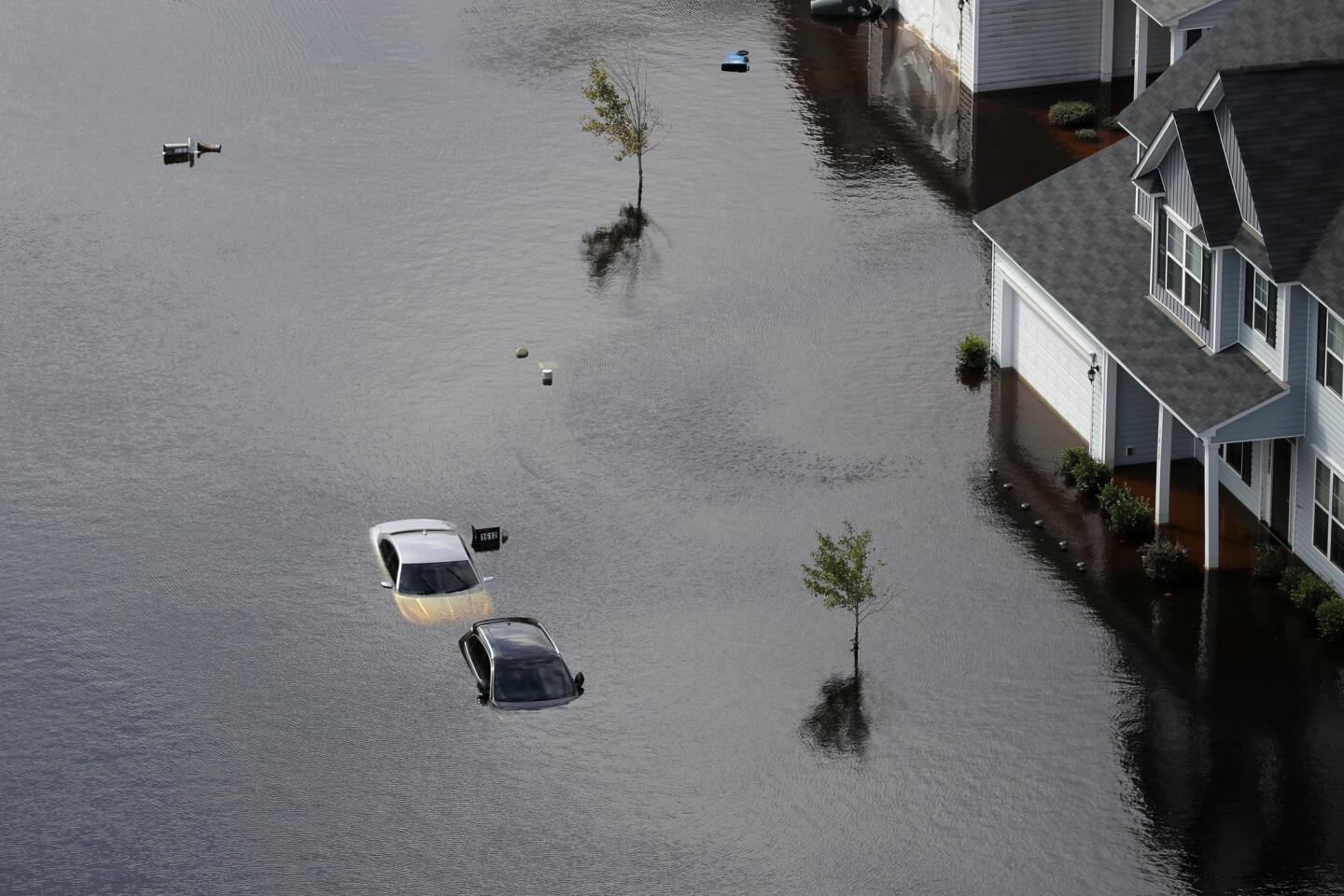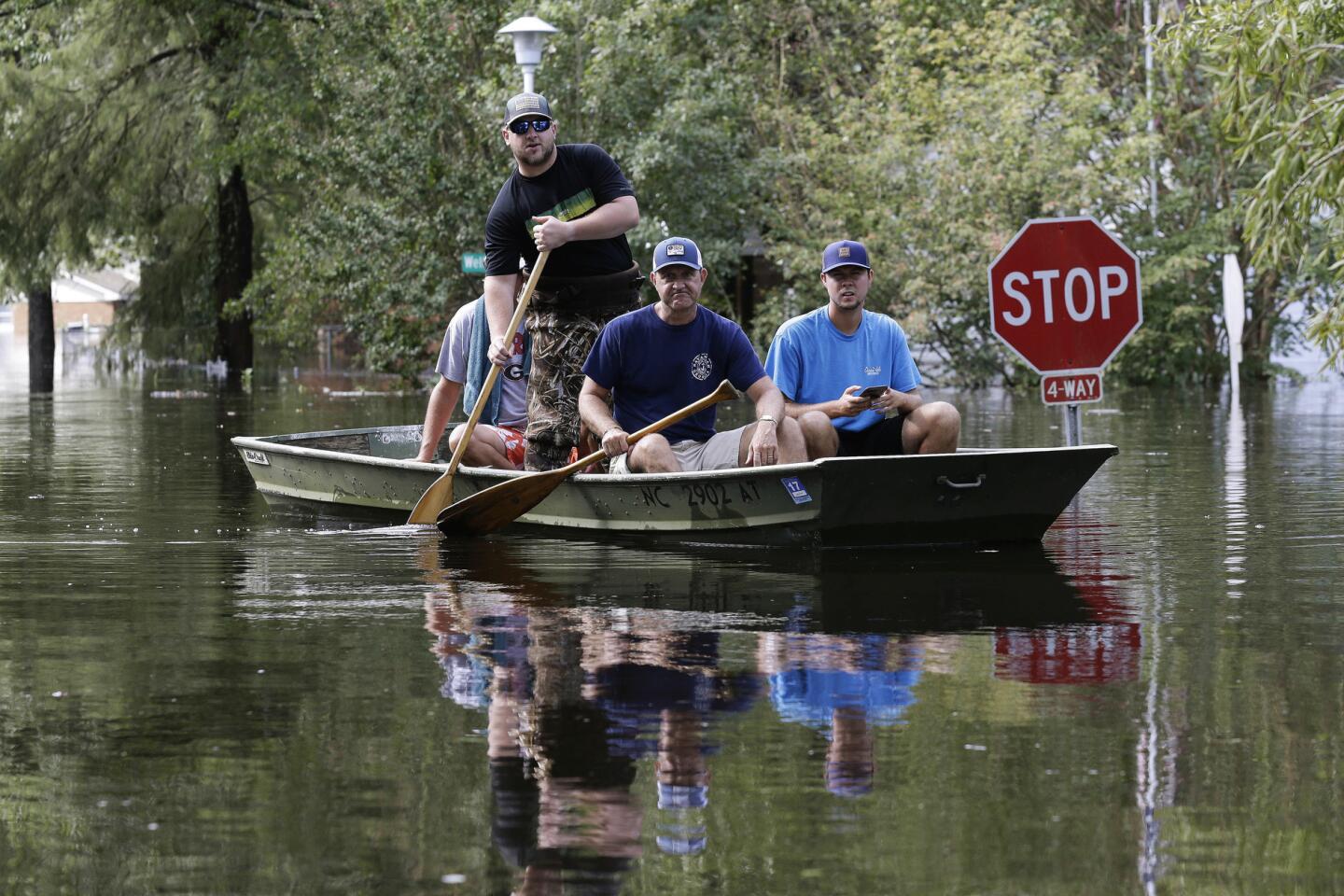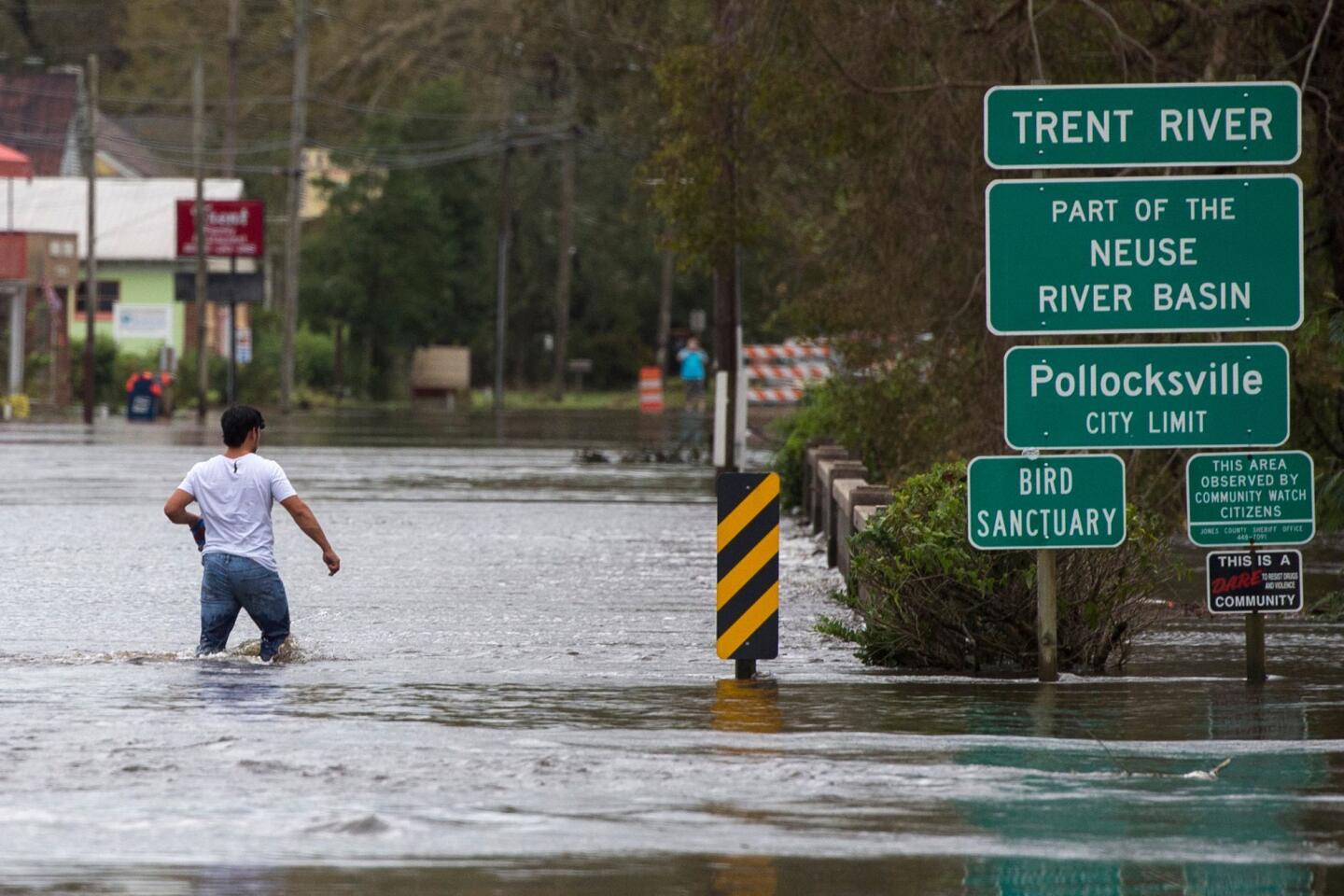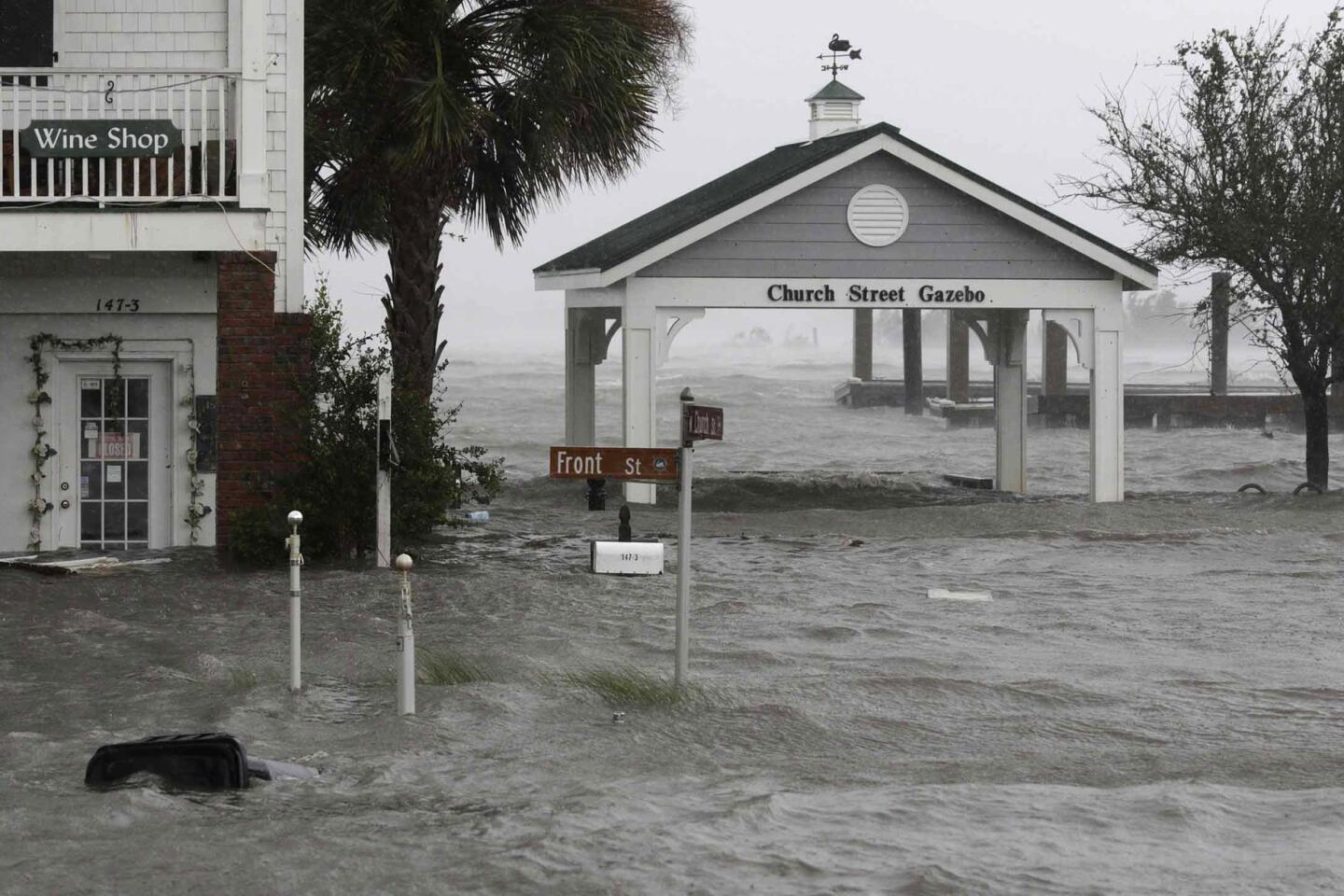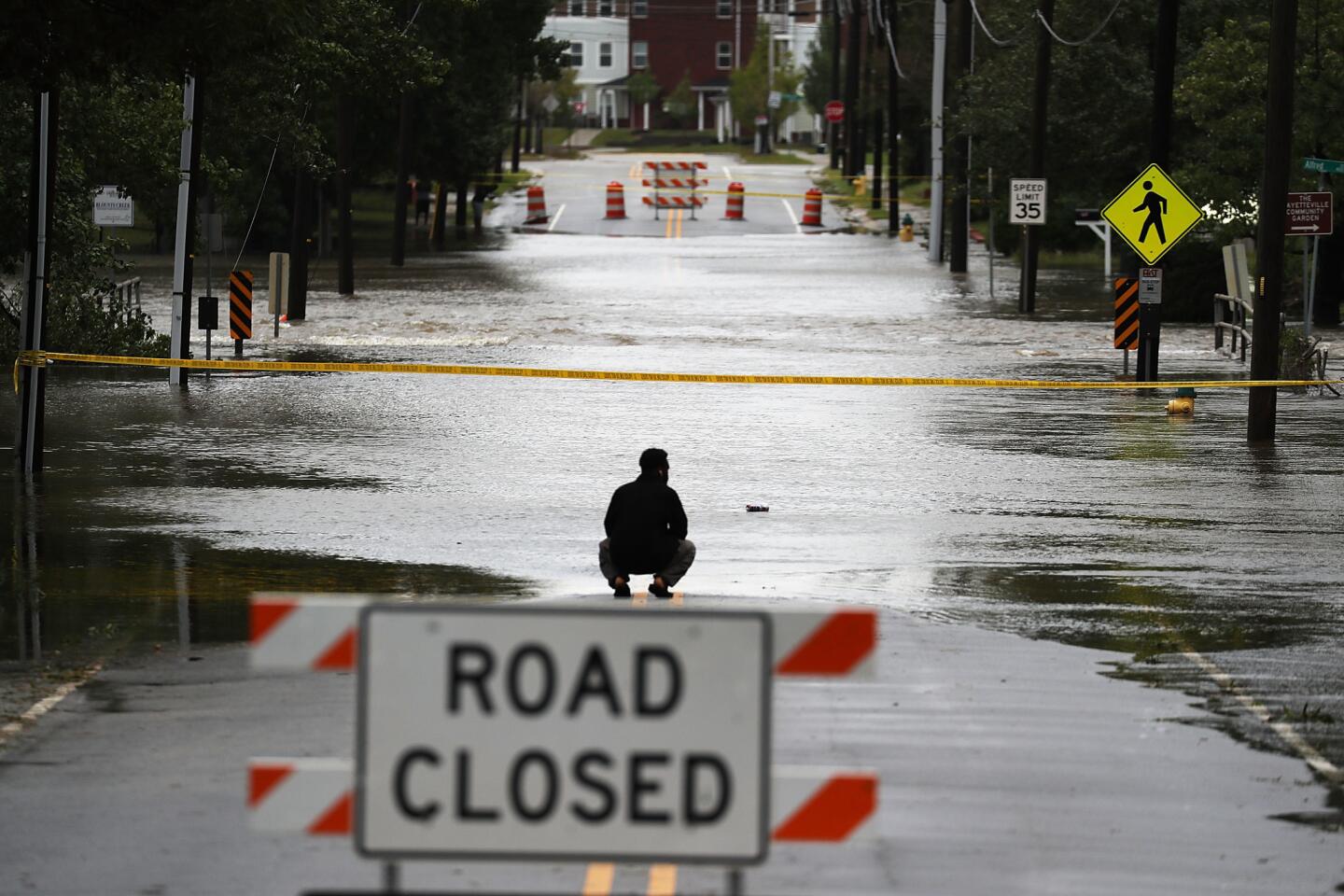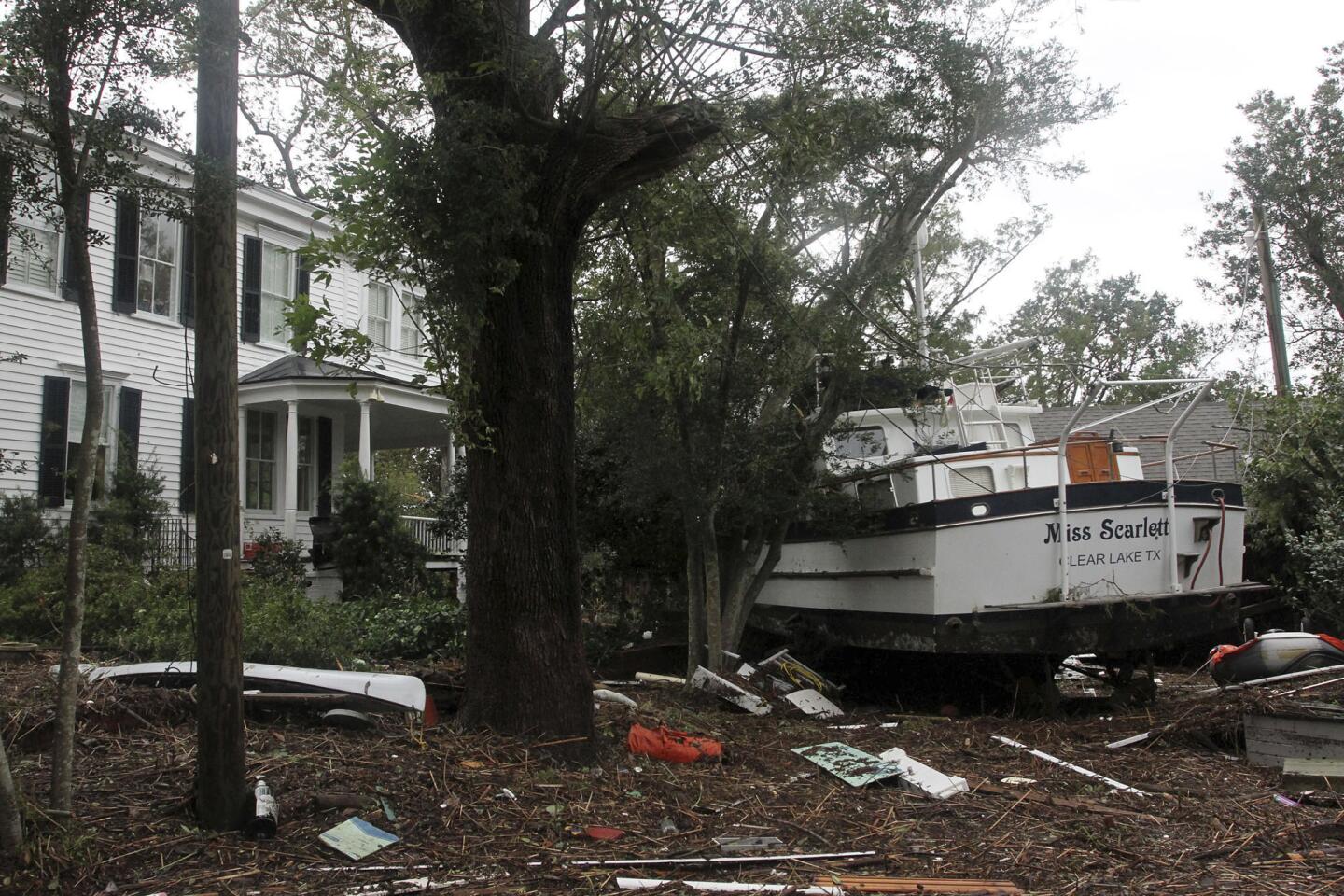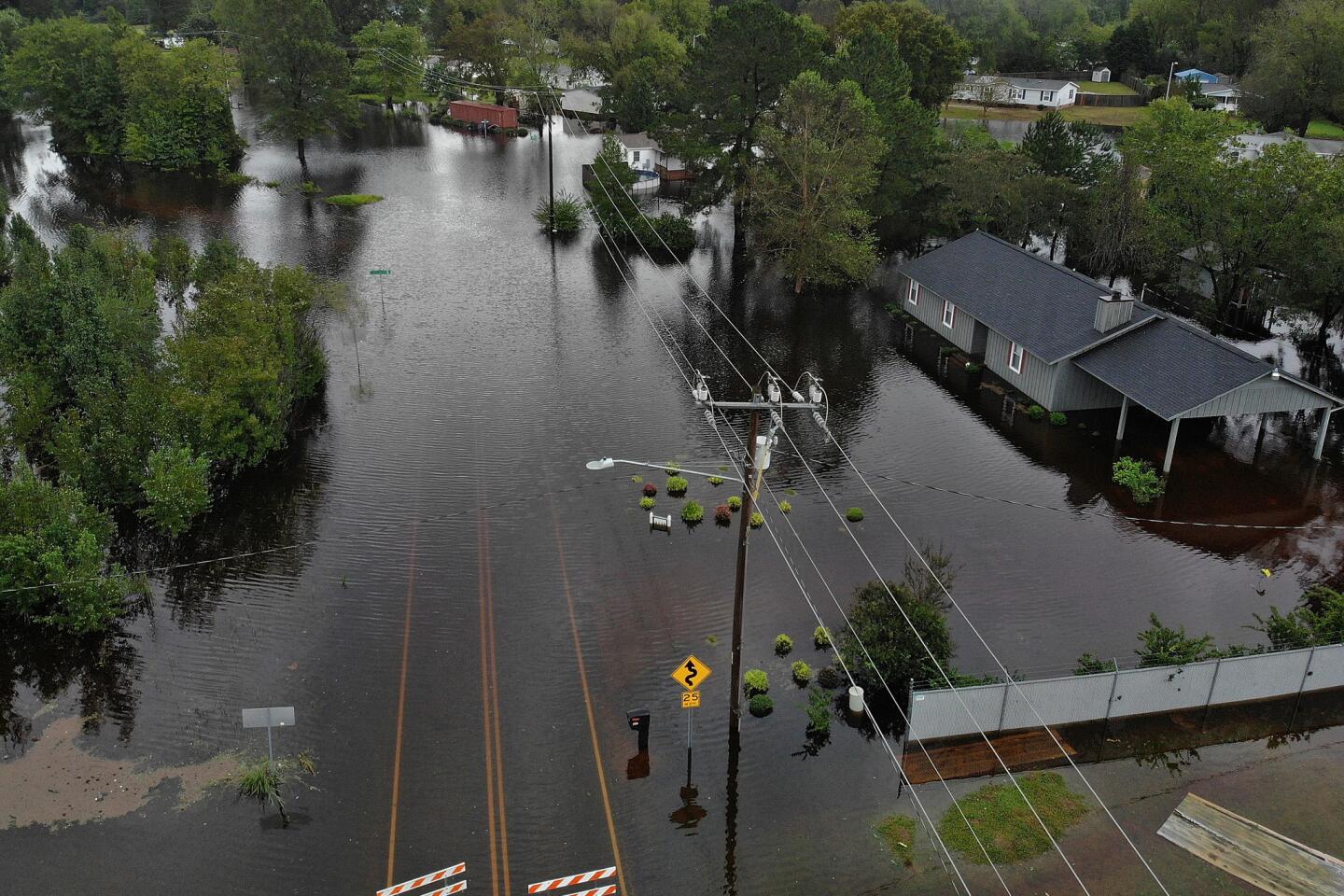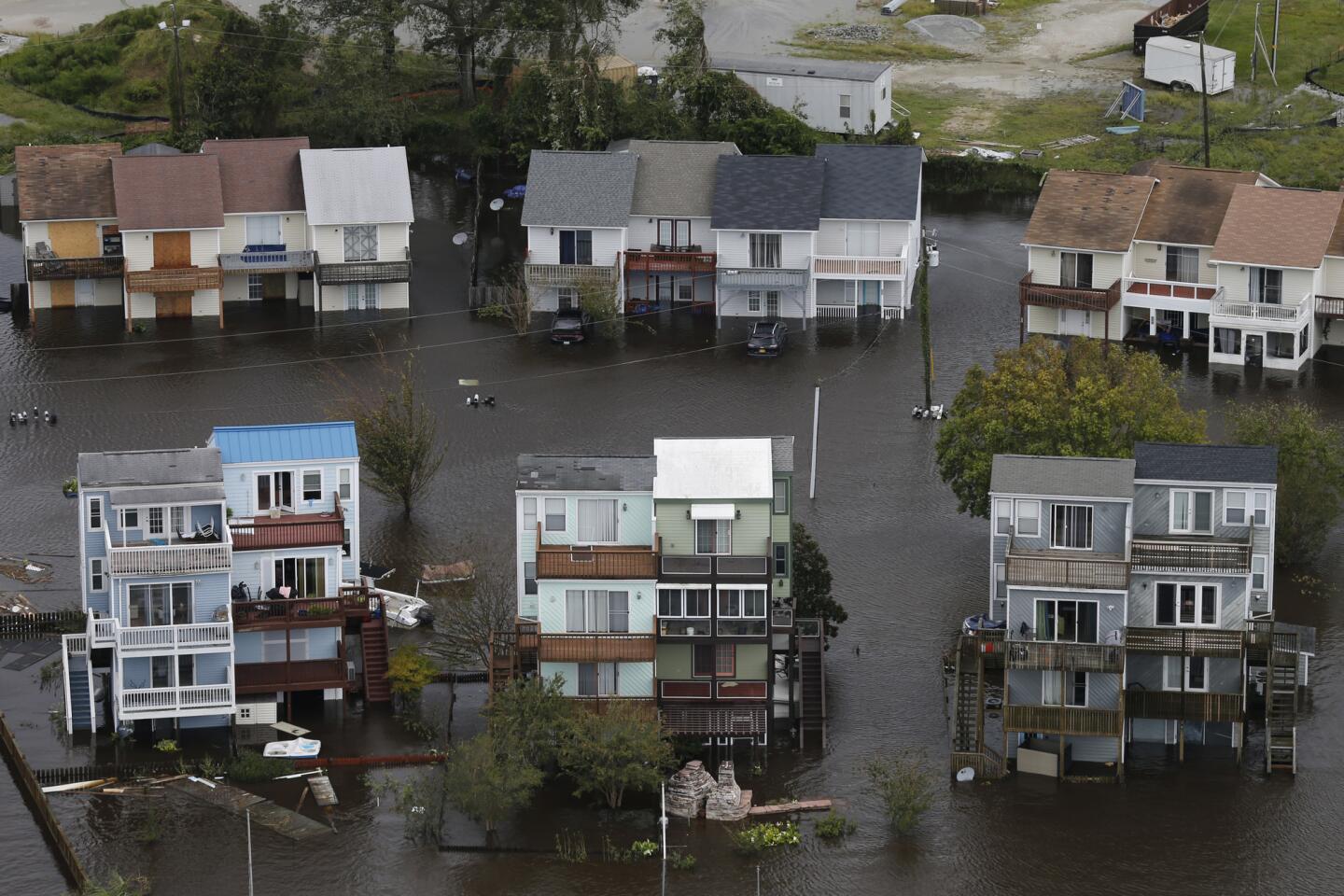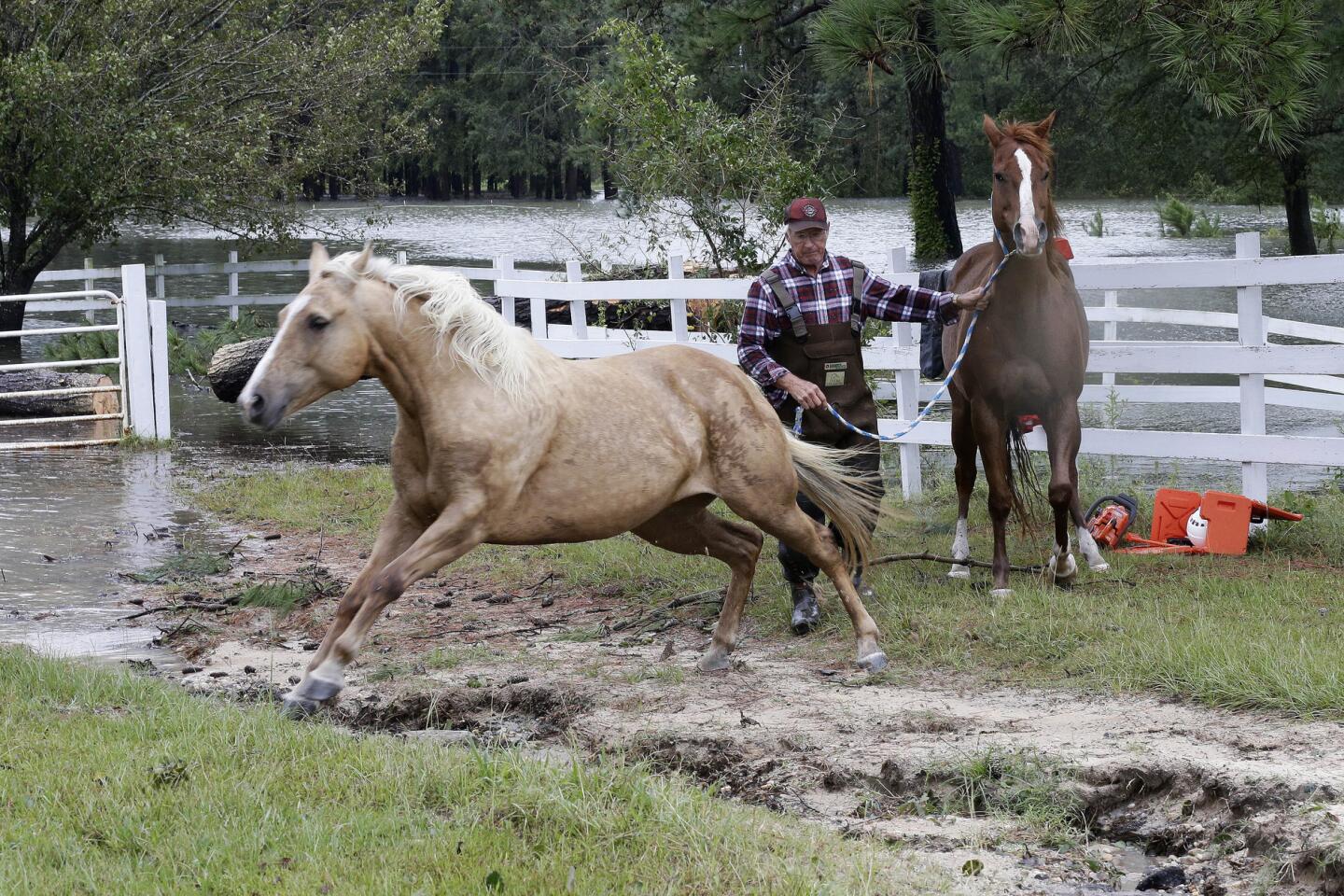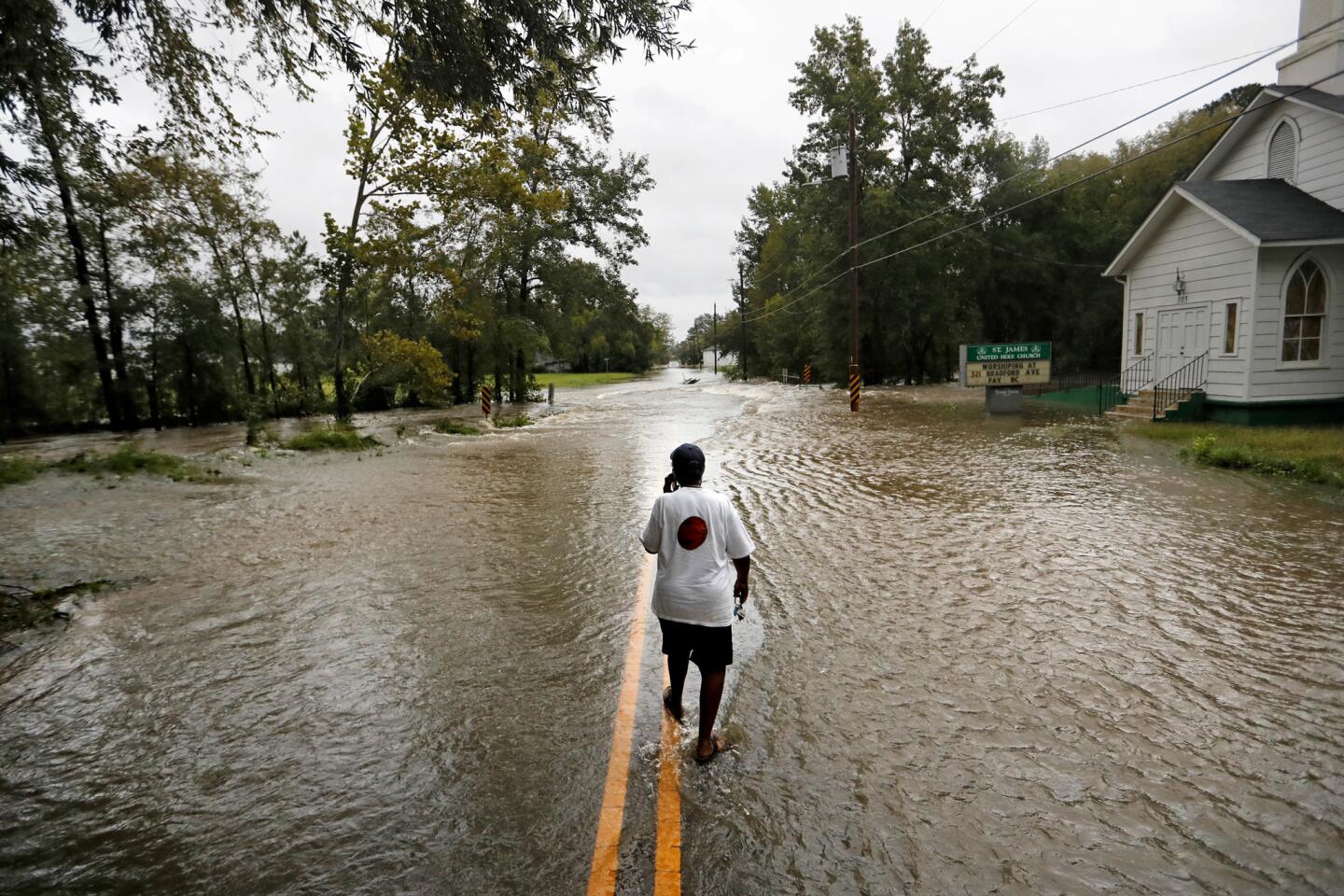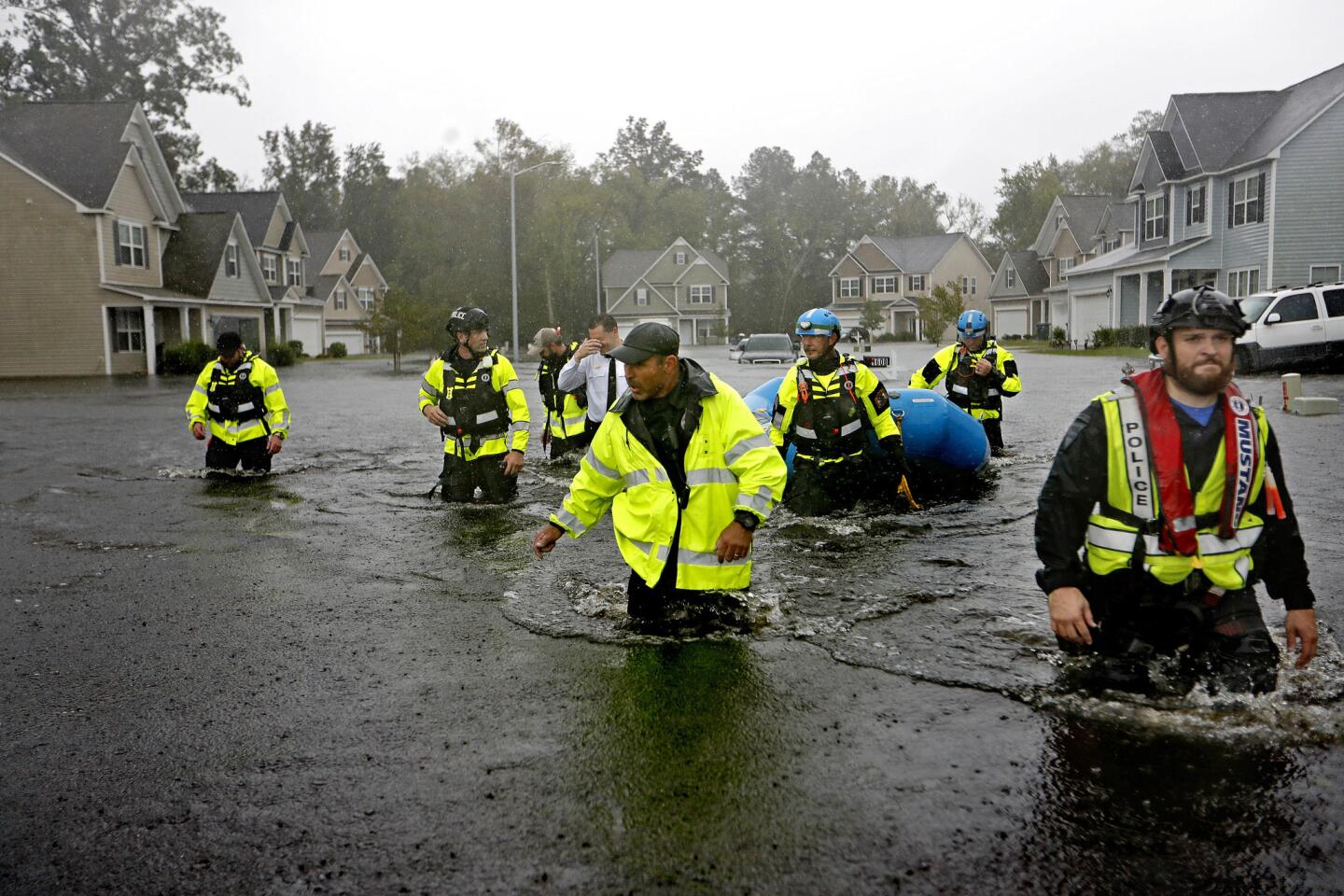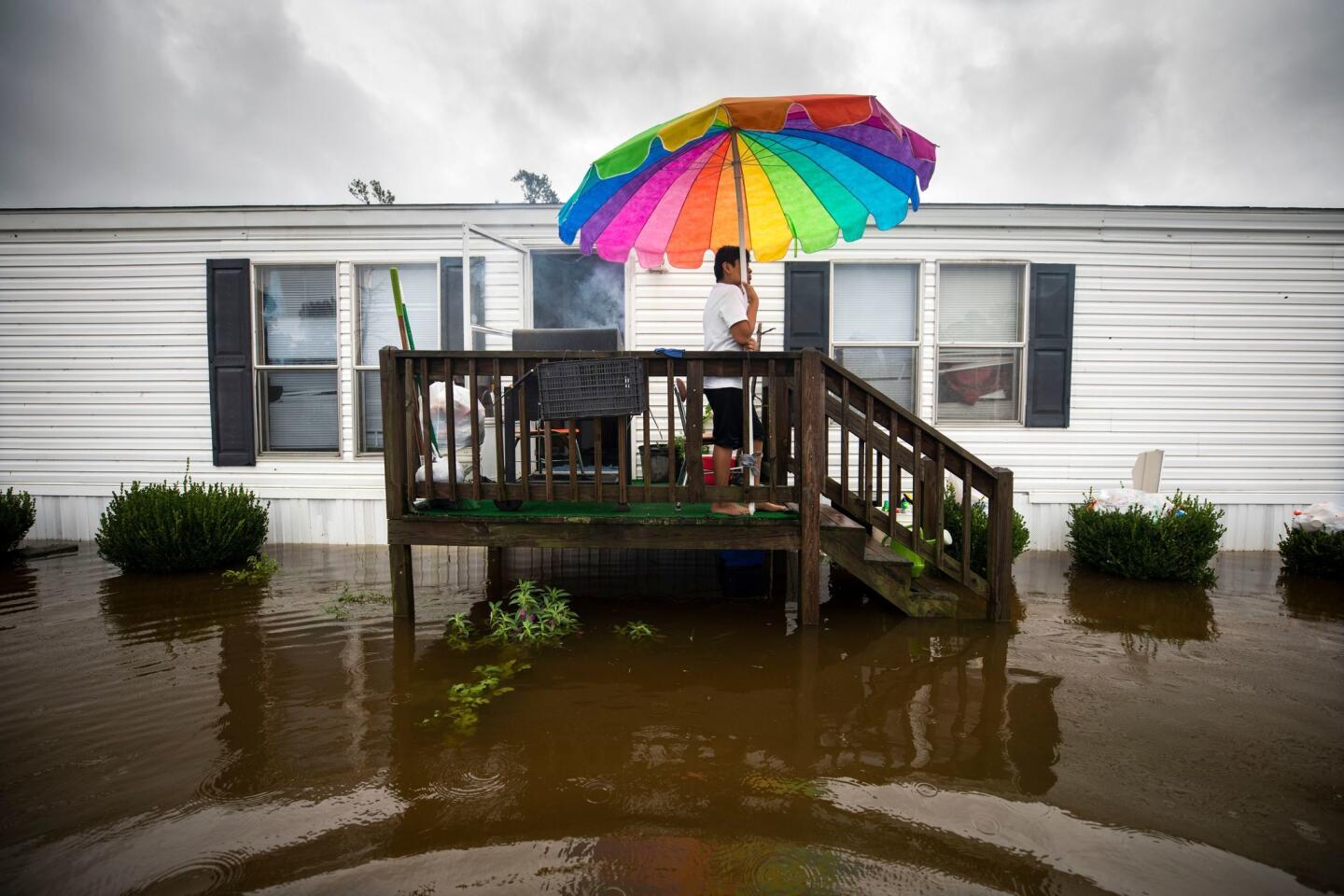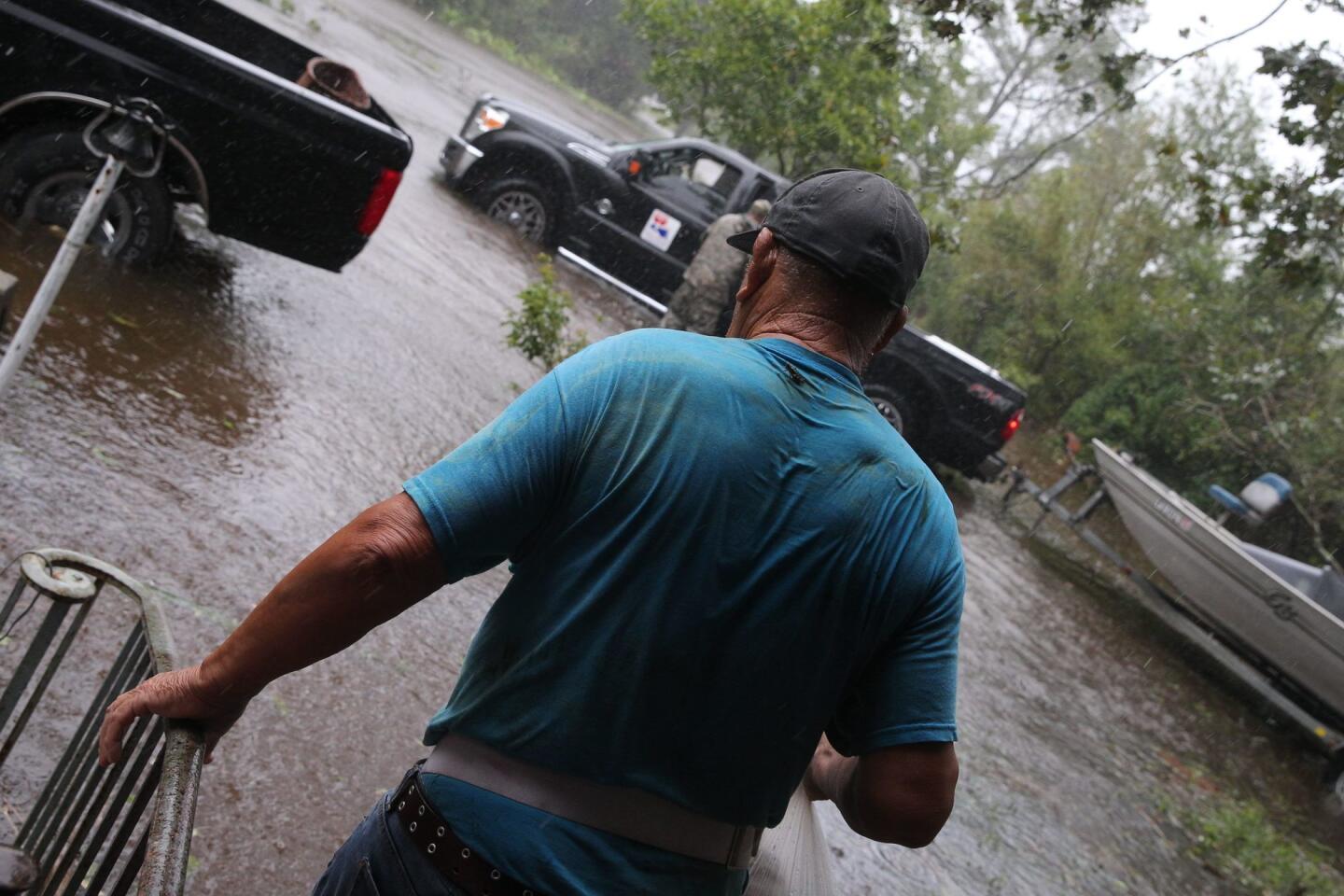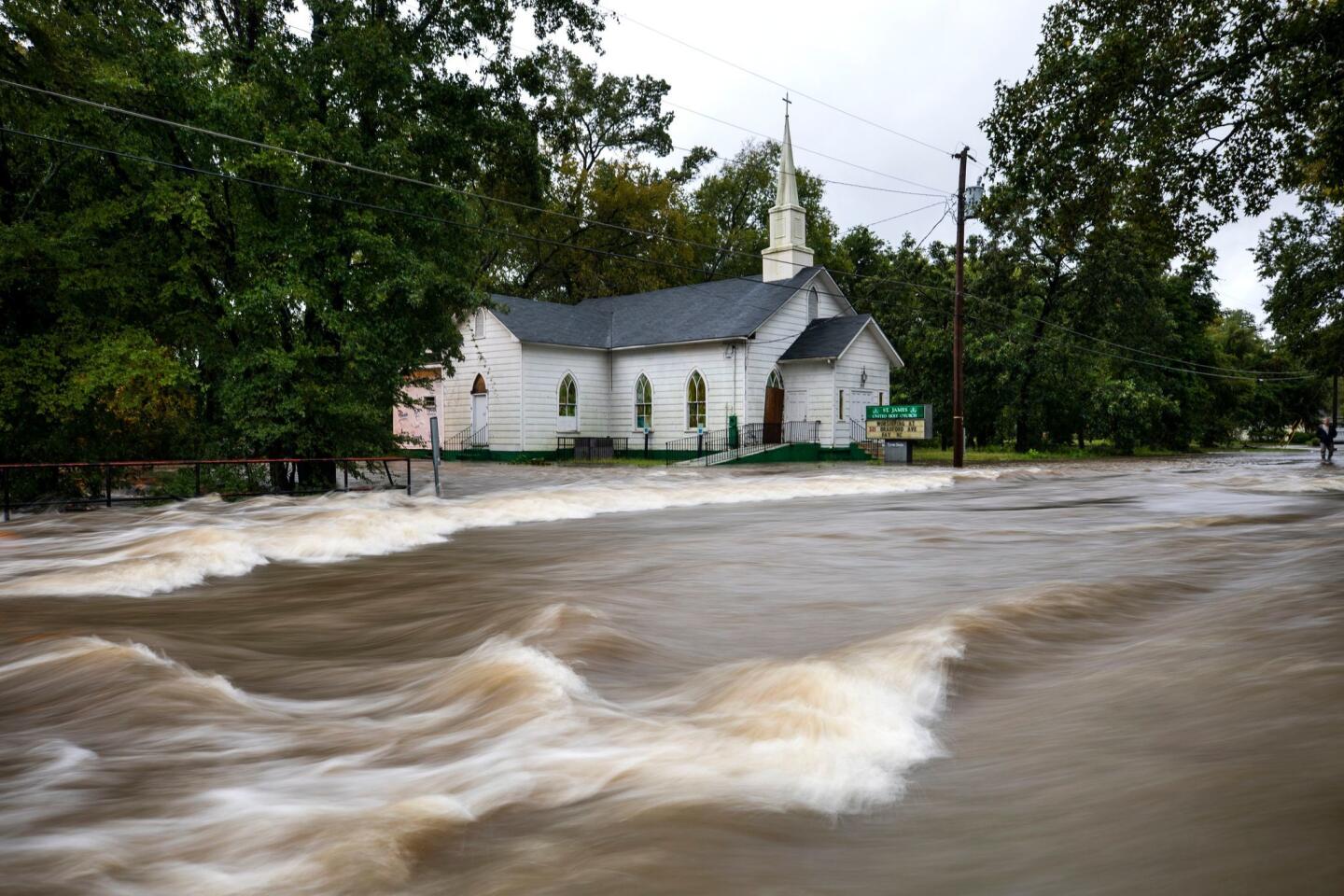Battered by Florence, North Carolina braces for more bad news as rivers rise rapidly
Reporting from Trenton, N.C. — For more than three days, Alonzo Harris, 64, was trapped in a flooded house in a flooded neighborhood in the flooded town of Trenton, N.C., sleeping on a kitchen counter, waiting for the remnants of Hurricane Florence to pass.
But after the rains moved on, the floodwaters stayed behind. Down to one bar on his cellphone battery, Harris dialed 911 Monday — and a team of Coast Guard rescuers and Jones County sheriff’s deputies launched a boat to come find him.
The trip was just a mile, but the eerie scenes they encountered were typical of those unfolding in communities across North Carolina since the wettest storm in the region’s history killed at least 32 people and left a vast tapestry of watery misery.
In Trenton, there were flooded schools with no children inside. Street signs were barely visible. One home appeared to have burned down during the storm, its blackened walls and beams sticking morbidly out of the water like the hull of a lost frigate.
At one point, the rescue team had to steer through a flooded graveyard, where tombstones and flowers peeked out of the water.
“Watch it!” one rescuer hollered after the boat scraped a submerged tombstone.
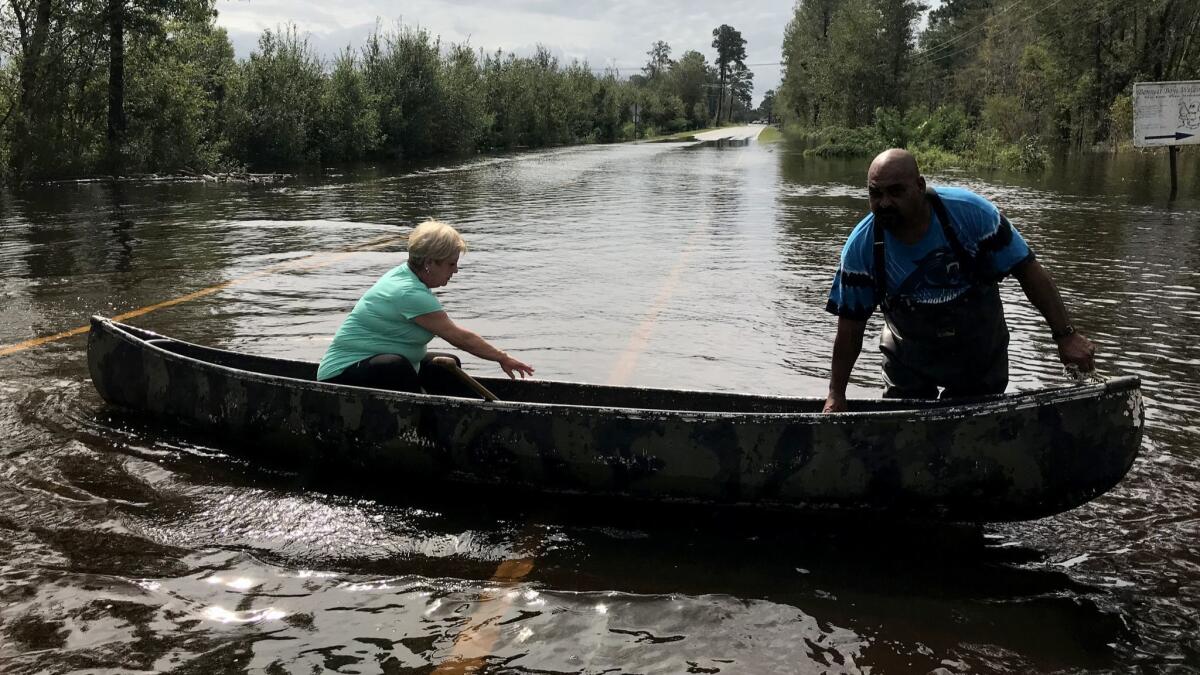
After rescuing Harris, who looked run-down and exhausted in his yellow rain slicker, the team found his mutt standing on top of a dog house, water lapping at its paws. The dog’s name was Luck.
“It was hell,” said Harris, who asked for a cigarette and dog food after he finally reached dry land.
But it could have been worse.
Most of the deaths were in North Carolina. Six people died in South Carolina and one in Virginia. Some places were slammed with more than 2 feet of rain, turning the Carolinas into a maze of flooded towns and highways where escape, and relief, is far from simple.
The coastal city of Wilmington, N.C., was still surrounded by floodwaters three days after taking a near-direct hit from Florence when it made landfall as a Category 1 hurricane. About 700 residents have been rescued, and damage was estimated at $13 million and growing, local officials said.
“We’re trying everything in our power, making every attempt necessary, to get resources to the community as quickly as we possibly can,” Mayor Bill Saffo said in a video to residents shared on social media. “But we’re also dealing with some very, very tough situations with respect to the impassible roads coming into the city of Wilmington, coming into the county of New Hanover.”
Roads may not open until Wednesday, after rivers crest, Saffo said in a news conference, calling the disaster probably “the most significant flooding event this state has ever seen.”
About 1,100 roads across North Carolina were closed as of Monday morning, primarily in the southern and southeastern stretches of the state hit heaviest by Florence’s record rains, according to the North Carolina Department of Transportation.
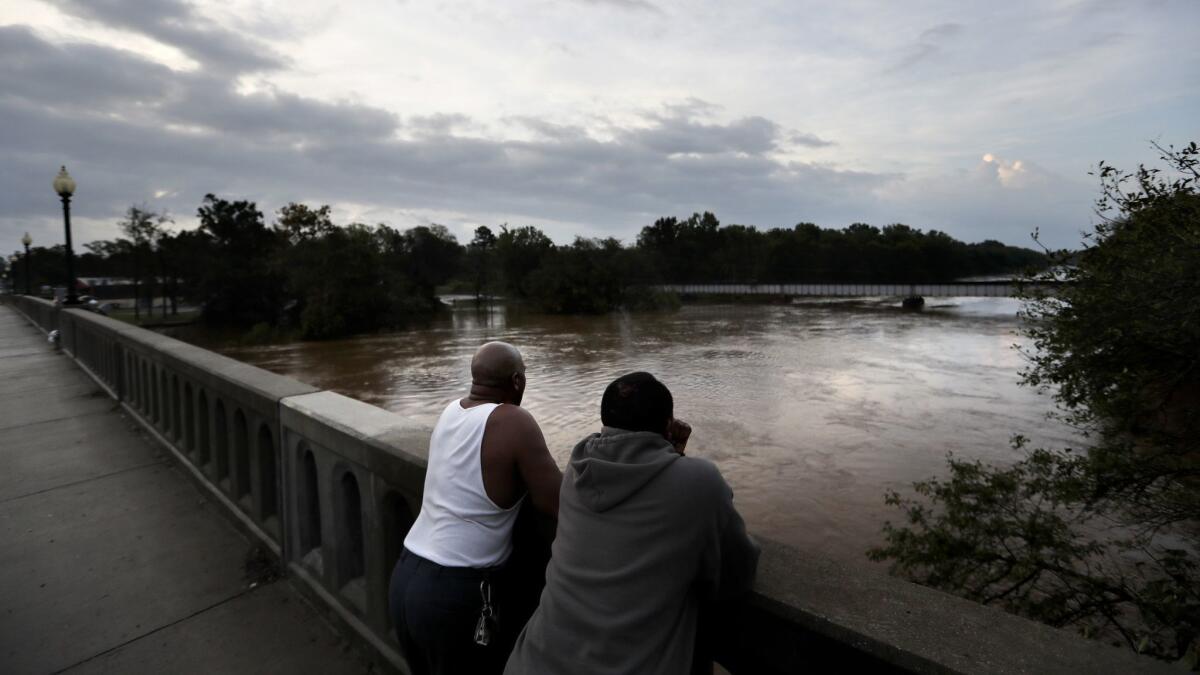
Once-simple journeys between cities have turned into unpredictable odysseys filled with detours, flooded side roads and outright failure.
But the statewide anguish has brought with it a strange kind of kinship as survivors do their best to get by, even if they can’t get around.
Some evacuees on the flooded roadsides in the piney woods between Wilmington and Lumberton, roughly 75 miles away, found the ways out blocked by flooding, downed trees, refrigerators, septic tanks and other debris.
Evacuees tried to help one another, chatting at pinch points, calling in closures to talk radio shows and uploading info to the Waze traffic app.
Reception was spotty, Google Maps unreliable. Some GPS apps have been steering drivers toward flooded roads. Other routes were blockaded by officials trying to prevent drivers from drowning.
At one highway blockade about 90 miles west of Wilmington, more than a dozen drivers parked and waited for hours, hoping the road might reopen.
Officials tried to tell them the road was washed out in multiple places, including a bridge state transportation experts said could be unsound.
But the evacuees didn’t want to turn back, having already driven several hours from Raleigh, Charlotte, Winston-Salem and other places where they had sought shelter during the worst of the storm.
Matt Stewart, 37, was returning to Wilmington with his family of four, plus two dogs and two cats, packed in an SUV. They had evacuated for a few days and stayed with relatives in Chapel Hill, and been in touch with friends who remained in the city throughout the storm.
Their house had minimal damage, but with the city cut off, Stewart worried about other vulnerabilities.
“Looting, for God’s sake. It’s unfortunate, but that stuff happens,” he said. “And if there’s leaks, I want to fix them.”
Related: When a Category None hurricane is worse than a Category 5 »
One of the few places open nearby was Orrum General Store, a gas station with no gas. The pumps had run dry Thursday, as they had at most other stations for miles.
The store, which doubles as a restaurant, had also suffered some roof damage and still had a tarp across the front windows.
But owner Gayle Wilkes felt lucky not to have flooded. At least not yet. Wilkes, 70, was keeping an eye on a nearby canal.
“They’re saying we still might get it, but so far the Lord’s looked after us,” she said as staff fried chicken and dished out vinegary eastern Carolina barbecue.
They had electricity, but the credit card machines and ATMs were still down. Customers felt trapped.
“All the roads are closed,” Wilkes said. “You can’t get out.”
Back in Trenton, some residents were lucky enough to reach higher ground. They, too, were waiting it out.
Gary Brown, 70, lost his house to flooding, but he was able to stay at his sister’s place next door and rode out the storm there with his nephews.
They were passing the time by cooking on a gas burner on the back porch — their latest meal was pork chops.
“I didn’t leave when [Hurricane] Floyd came” in 1999, Brown said. “I’ve been around since Hazel.”
Which means Brown has been around for a while. Hurricane Hazel hit in 1954.
Further uphill was Gloria Moore, 58, who had also remained behind. With no electricity, she’s spent days doing crossword puzzles.
It was eerie at night. “All you hear,” she said, “is the crickets or the frogs.”
molly.hennessy-fiske@latimes.com
Times staff writers Megerian reported from Trenton, N.C., Hennessy-Fiske reported from Lumberton, and Pearce from Los Angeles.
UPDATES:
7:45 p.m.: This article has been updated with the latest death toll and extensive reporting on evacuees and rescue efforts.
10:50 a.m.: This article was updated throughout with Times reporting.
This article was originally published at 7:50 a.m.
More to Read
Sign up for Essential California
The most important California stories and recommendations in your inbox every morning.
You may occasionally receive promotional content from the Los Angeles Times.
